2011 Calibre Prize (winner): 'Who Killed Matilda?'
I am a doctor. Once I was a doctor of individuals, now I am a ‘doctor of populations’. Population health is about actions to improve the health of communities, nations, and the world. Challenges are many: the mobility and density of populations, contemporary desires and pressures, the safety of food in complex systems, poverty, the immense power of big businesses such as tobacco companies. All this, yet it was the rise of infectious disease worldwide that caught my curiosity, a J curve swooping up, exponential. My days became consumed, working alongside others to detect and respond to emerging infectious disease threats. Old diseases thought banished returned, shaking off the dust and spinning their DNA. Something was amiss in our carefully designed strategies. I came to suspect a deficiency, a mistake, maybe a corrupting thought or belief in our basic assumptions about the interaction of microbes and the environment. I wanted to find out what it might be.
It all began with Matilda. She took my breath away in her audacious non-conformity. A scrawny Aboriginal, maybe thirty-five years old, her skin black as night and her eyes sparkling with humour and a snippy wit that could cut me down. She wore a thin floral dress with vibrant red roses and white dance shoes with near stiletto heels. The shoes were too big; her dusty, bony feet disappeared into the shadows. She clip-clopped up the stairs and across the cracked linoleum of the waiting room. I told her she looked like Daisy Duck. She laughed and slapped her white vinyl handbag, blotched pink with the dust of the pindan desert, against my arm.
I was a doctor of individuals in the Kimberley, the rugged north-west of Western Australia. Halls Creek, to be exact. It is hot in the Kimberley. It only has two seasons, the wet and the dry. Aboriginal people say it has six.
Matilda never came to see me by appointment. She came wanting a dressing for an abrasion, or suddenly decided her heart should be checked, or she was worried about a child who needed a home visit because its mother was drunk or playing cards. Among the metallic lines of the emergency room she was out of place, always distracted, touching things like the defibrillation machine, as if it might hold some wisdom. Frequently it was Matilda who was drunk and in need of rehydration or an examination to establish whether any of her limbs were broken.
It was late in the year. The heat and humidity were intolerable, and the rains had not come. The police, stern and straight-faced, brought in Matilda. As usual, she was lively and voluble.
‘Hey doc why you wear ’em tight pants. You wanna be man like. Ain’t no good being a man like. Youse a, eh, a woman, doc. Youse woman. You should be strong there. Youse a woman.’
I felt her limbs looking for fractures. The skin around one eye was swelling. I wondered what other bruises were hidden by her dark skin.
‘Doc, you like my dress? I like ’em flowers. Them rains, they real late doc. You know the land y’know it goes green cos it knows the rains are comin’. Gets ready. Dem bushes not ready. All animals they gotta get ready.’
Matilda’s arm was broken. Forearm. A typical assault fracture. I looked at the police. Their arms were folded. Other mayhem was coming through the door.
I didn’t bother to order an X-ray. The machine was being repaired, and Matilda would never travel to the next town, or down the street, even if there were such services here in the ‘outback’. I pulled her arm straight and encased it in a plaster of Paris. She had to go. She was worried that the boab trees had not flowered. Them robber birds hadn’t come either. She had to take care of this.
‘We gonna dance, ceremony for the rain to come, get everythin’ right again.’ She wandered out in her rose dress, her stained accessories, and a shining white plaster of Paris arm.
The emergency room emptied as night approached. Dirt scuffed in eddies against the wall, and the bins overflowed with bloodied bandages and torn clothes. The orderly, a part Aboriginal who never looked up, drew a mop through the metal rollers of a bucket and splashed water across the floor.
I walked home. Crows picked over the chicken bones strewn across the road. On the kerb was a flattened Kentucky Fried cardboard tub. Someone must have brought that in on today’s plane. It was always the same. There was always a big tub of Kentucky Fried, all the way from Port Hedland – Perth, even.
On the corner a boab tree stood like a monk in a stained cassock with multiple skinny arms high in the air, exasperated at some transgression. It was very fat, several feet in diameter, and had an indent like a little cave you could curl up in. It was hundreds, maybe thousands, of years old. Fuck you and Yorky 1978 were carved in deep cuts on its trunk. The limbs were bare, not the slightest bud of green. Above, billowing cumulus clouds threatened to engulf the evening sky. They moved like an ocean tide over the first stars of night, covering the streams of stringy cirrus clouds of all shades of purple. The moon rose, luminous and wobbly in the hazy fading of the heated day.
Next morning the clouds were gone and the sun burned white. Matilda’s shoes clattered on the tiles of the emergency room.
‘Little fella, Cody, he has big cough, like poor fella. I rock ’im like this, and I give ’im water. You gotta take me get ’em leaf from dat tree. Lawuny tree.’
‘Bring him here so we can give him medicine.’
Matilda looked to the floor. The cast on her arm was already dirty and frayed.
‘Him need ’em lawuny.’
‘I can get someone to take you and bring him back for check here.’
She shook her head and stood, her black bony fingers clasped around the grubby vinyl bag. If Matilda was worried, I was worried. Should I ring the social worker? The social worker had long ago decided Matilda was a lost cause, but I could go. I had help that week, an efficient square-jawed, rosy-cheeked German doctor who loved being among the Australischer Ureinwohner. They were so old and spindly, he said.
‘What about I come with you and see this boy?’
Matilda smiled. I was suddenly suspicious. She wanted transport. That was it. She would probably ask me to wait near the grocery store and she’d take a detour on foot to the liquor store. I could see it, the white plastic bag with a cask of moselle hidden by a big bottle of Coca-Cola and a loaf of Wonder White bread.
In the Toyota, she sat with her back straight and gazed at the landscape, sometimes swivelling to keep a tree, a cloud, or something in sight. I didn’t know where she lived. Her address was always different. The house we came to was like many in the town, high on stilts to take advantage of any flutter of breeze. It was scarred with holes through its fibro walls and every window was broken. Mangy dogs lay in the shade snapping at flies or pawing at the hot layer of dirt to make a sleeping place. A teenage girl stood in the shade of a straggly gumtree, holding a child wrapped in what looked like a woman’s skirt.
The skinny child was two years old. He whimpered but had no energy to cry. He was breathing quickly. I heard the soft crackles of his sticky lungs as he drew breath, a whistle of narrowed airways as he breathed out.
I argued with Matilda.
‘No hospital,’ she said, ‘first ’em leaf.’
‘Is it far to this tree?’ I asked in desperation.
She shook her head.
‘Okay, I will drive you to the tree, then straight back to the hospital. I want to start him on this medicine right now, though.’
She shrugged in reference to the medicine. I pulled out a syringe, drew some liquid antibiotic, and eased it into the child’s mouth. When he coughed, much of it dribbled out. I repeated the manoeuvre; this time with another medicine that I hoped would relax the airways and make it easier for him to breathe. Matilda gathered him to her. The syrup dribbled down his neck and the flies hovered looking for a moment to sup on the wonders of modern medicine. As we drove she said nothing, a flick of her finger told me which way to go.
We turned off the bitumen on to the dirt, then off the dirt onto what looked like an old cart track. We came to a thin, gnarly tree with brown bark and small greenish-blue leaves. It was old and, yes, spindly. Matilda set about making a fire. With a stick she began to dig a hollow at the base of the tree. I held the child, listening to the crackle in and the wheeze out. I thought of the Hippocratic oath and figured I should make a run, leave Matilda and take the child back to hospital. Cool him down, give him some intravenous antibiotics and fluids, maybe insert a tube through his nose down into his stomach for feeding.
Matilda gave me a quick look, as though she read my thoughts. She crouched at the fire holding a leaf from the lawuny tree above the flames. I saw a knot with a bulge in the hemline of her dress. The car keys. I was angry. She came close and put the smouldering leaf under the child’s nose. Her head bowed and was still. I saw she was the Madonna; there was no one else but the infant child in her eyes. My anger had nowhere to go and I felt helpless.
She scattered the fire and sprinkled sand over the coals and burning twigs. On top she spread leaves from the lawuny tree. The sun burned through the thin foliage, and the child was hot. His eyes were half open. I brushed the flies away. I tried to ease water into the corner of his mouth using a syringe. Matilda smashed a termite mound with a large rock. The clay-like soil crumbled and the white ants with their tiny black eyes and feelers hastened from the glare and dryness of the sun. She gathered the warmed leaves from the fire and filled the hollow, then took the child from my arms and nestled him naked in the leaves. She mixed the dirt from the termite mound with water into a paste and covered the child with it, then stirred the fire and put a branch from the tree with fresh leaves on the flames. The smoke drifted in biting swirls toward us. It had a peculiar aromatic peppery smell.
‘Matilda!’ I tried to be harsh, I tried to order her. She seemed not to notice and motioned for me to sit with her by the mud-covered child.
I watched his breathing, the dribbling at the corner of his mouth. The mud dried and cracked. His hand curled in a tremor around a bunch of leaves and softened again. His breathing eased. Matilda sang in a low muttering way. Up high, an eagle with widespread wings banked in a tight circle in an endless sky. I closed my eyes and made myself think of nothing. I fell into Matilda’s song and the sky swallowed us completely.
The world was silent. The sun passed overhead, and soon its rays reached under the tree in a glare of late afternoon. The child began to talk and laugh in baby-babble. Matilda’s eyes danced and she played with him, dropping leaves on his chest. He grabbed a fistful, threw them and watched them fall, giggling as they brushed against his face. The crackle and the wheeze were gone.
‘Why didn’t you just let me take him to hospital?’
The child sat on her lap banging a small branch against the dashboard of the car.
‘Too much white fella stuff, the rain not come.’
‘So, is the rain coming?’
‘Everything messed up.’
‘Messed up?’
‘Yeah, them ants ain’t making their lines in the ground, them birds mak’em home in dem other bird nest they aint coming, ’em plums ain’t coming right.’
At the house, I handed Matilda a bottle of antibiotic syrup. Two times a day, a spoonful or use this, I said, indicating the syringe.
‘Promise me, Matilda, you will make sure he gets the medicine.’
She took it, but without interest. Hand on hip, she was looking at the sky.
‘Him alright.’
In the days that followed, I was busy. The clouds built in a great wave, but refused to rain. It was early morning, with long golden shadows, when the police came to the hospital. They asked me if I would kindly provide a death certificate for the body they had in the van.
Matilda was there, her skinny legs and arms hanging over the stretcher, the Daisy Duck shoes precarious on her feet. Her handbag was on the floor. I felt my chest tighten and turned to hide my face from the police. I picked up her bag and looked inside. It was empty except for the little pouch of silica gel put there by the manufacturers to keep the inside dry.
‘How did she die?’ I said and tucked the bag under her arm.
‘Found her on a track – probably been at some desert party, she must of been making her way back in. Probably the boys finished with her. Musta been drinking heavy. Dehydrated I reckon. It’s been so bloody hot. How did she die? Well, that’s up to you, doc.’
I didn’t order an autopsy. I didn’t know how you could factor in cultural indifference, racism, ignorance, a misfit system. I went home and refused to cry.
The week was wicked. It was as if a steaming hot iron was held just above the town. The police brought many in, full-blood, coloured, or ruffian whites, all trying to understand different things by wrapping themselves in dirt and becoming as inebriated as possible.
As the day ended, black clouds rolled in from the west, building on top of each other. Lightning stabbed hard, sparking at the dry country; orange flames flickered in the black heaviness of the night. A flash of sheet lightning silhouetted the boab tree. Leaves? I took a step closer. Lightning struck again. The leaves, above the fuck you were tiny, fresh, lime-green. A single flower was open, four petals, simple in design and clean white, facing upward to the heavens. I wanted to tell Matilda it was alright. The boab was ready. All I could do was shout at the sky as if she was up there. I yelled as the thunder rumbled.
Then it rained, so hard that the streets ran in rivers of red mud.
I walked with my head back and tasting the sweetness of the sky. I didn’t understand why it still hurt that Matilda had died. I had seen many die and, really, she had brought an early death on herself. She would probably still be here if she hadn’t been a drinker. As I let the rain soak my clothes, I thought about that. I thought that to be a really useful doctor I needed to go further ‘upstream’ to tackle things like alcoholism in a community, and other things such as nutrition for children; I needed to help these people.
I didn’t get it then. I don’t know if I do now. I didn’t understand why it was so darn sad that I didn’t see or care that the ants weren’t making the right tracks. I never learned how to see that.
I did the work with the many others that it takes to turn the health of a population around. Laws to reduce smoking, national programs to make sure people be immunised, have pap smears, have their prostate checked, reduce trans-fatty acids and salt. Sit still, read this. All of you. Nothing though seemed to stop the decline of the health of the Aboriginal people. It seemed that, like many species of birds, frogs, and insects, they were headed toward extinction. The Aboriginal issue was a favourite topic on talkback radio. I cringed when John Howard, our prime minister, passively looked on while Pauline Hanson played on Australian bigotry: ‘Tell me how Aboriginals are disadvantaged when they can obtain three and five per cent housing loans denied to non-Aboriginals.’
If only they would take advantage of such opportunities. They would progress as a people. The Economist magazine reiterates that progress is essential. Developed countries must have vibrant economies. By the trickledown effect, the standard of living in developing countries or disadvantaged populations will improve. The easiest way to define progress, said an economist friend, is an increase in Gross Domestic Product. Quality of life is assumed in this. The more money, the more productivity, the better.
Bruce Chatwin, in his book The Songlines, speaks of the ‘linguistic genius’ and complexity of Aboriginal social and cultural life. There was a clear objective to what they did: ‘the whites were forever changing the world to fit their doubtful vision of the future. The Aborigines put all their mental energies into keeping the world the way it was.’
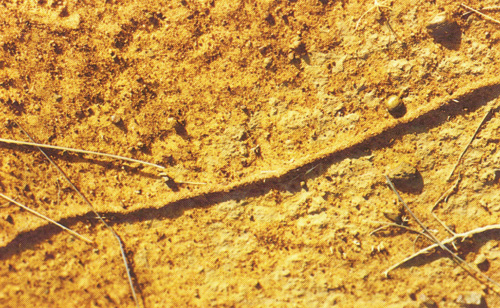 Tunnel track of Ngajapila ants
Tunnel track of Ngajapila ants
In Kalgoorlie, beyond the cyanide heaps and the mine scaffolding, is an Aboriginal community whose inhabitants suffer regularly from Methicillin Resistant Stapholcoccus Aureus (MRSA). Resistant to antibiotics, the bacterium causes abscesses, skin infections, and a frightening form of pneumonia. Gene typing shows us that it is emerging in many parts of Australia and throughout the world. The pressures that are causing this micro-organism to evolve in different places are the same; unnecessary use of antibiotics for people and in agriculture, crowded conditions, poverty, and lack of water.
The medical world was not ready for the sudden rise in infectious diseases. Doctors and scientists, in the middle of the twentieth century, declared that germs had been conquered. Little was taught in medical school of contagious diseases and epidemics. Dr Petersdorf, president of the American Colleges of Medicine, wrote in 1978: ‘I cannot conceive of a need for more infectious disease experts unless they spend their time culturing each other.’
Perhaps the medical fraternity didn’t consider Africa as part of the real world, for it was there that the microbes were stirring. In 1969 an American nurse died of a new disease, Lassa fever, which she had contracted in Nigeria. The incident heralded the rise of the haemorrhagic viruses. Ebola is the most notorious, a deadly disease that struck fear in people’s hearts and caused hazmat-suited teams to meet aeroplanes from Africa should anyone on board have a blood nose or a cut finger.
Human Immunodeficiency Virus (HIV) was first identified in 1981, when it reached the developed world. It had probably been around for the better part of a century, in clusters in Africa where a syndrome known as the ‘slimming disease’ had become frequent. By the 1990s no one could place the blame on Africa as new diseases were emerging in all social strata. West Nile Virus took America by storm in 1999, happily carried by the Asian ‘tiger’ mosquito which found the United States very much to its liking. Nipah virus emerged in 1999, killing 105 farmers in Malaysia and necessitating the killing of more than one million pigs.
In Australia, a new ‘Nipah’-like virus was identified in 1994 and named after a Brisbane suburb, Hendra. There have been thirteen outbreaks of Hendra, which have killed numerous horses, three veterinarians, and one horse owner. Like Ebola, Hendra is termed a level four virus, handled only in special laboratories in certain parts of the world. The link in the rise of the Nipah-like viruses in the Asia-Pacific region is bats. Bats don’t succumb to the viruses, but are good ‘intermediate’ hosts. They carry viruses, both the old and many of the new. The normal habitat of bats is being destroyed. Their numbers are decreasing, but they are forced to live in crowded and, for bats, poverty conditions – leafy outer suburbs in northern Australia. It’s a condition favourable to the multiplication of viruses. The microbes are screaming at us.
Epidemiology is the study of disease patterns. It is possible to conceptualise the recent world in terms of changing infectious disease patterns. Epidemiological transitions are points in history in which there have been major changes in the pattern of emergence and spread of infectious diseases.
There have been three transitions marked by major changes in agriculture and our ways of living. The first transition point was ten thousand years ago, when many hunter gatherers became subsistence farmers. The ‘white plague’ that is tuberculosis, and the ‘black plague’, bubonic plague carried by fleas on rats, emerged and swept across the world, but slowed precipitously just over a century ago.
The second transition point occurred with the increase in the standard of living and attention to public health after the Industrial Revolution. There was a decline in infectious disease. The usual killers virtually disappeared from developed societies: smallpox was declared eradicated; malaria was reduced to a thin line in the tropics. It was, by history’s standards, a brief lull.
The third transition, occurring now, is marked by a rise in both infectious disease and chronic ‘lifestyle’ diseases. It is argued that the third transition point is being driven by increasing inequality between societies and rapid changes in ecological and social relationships.
Precarious times. Oil is running out. Water has become a scarce commodity. Ice shelves are melting. The oceans are turning to acid. Scientists say that with one change in the amino acid sequence of the avian influenza virus this disease could cause the death of millions of humans. David Suzuki, in The Sacred Balance, writes that if people disappeared from the Earth there would be little impact on nature; in fact, it would allow the Earth to heal. On the other hand, if you removed ants, eco-systems would topple like dominoes.
It is sobering to think that the Earth doesn’t need us. ‘Gaia’ is a concept that James Lovelock introduced in 1979. Earth is a single being, Gaia. All components of the world, be they air, water, rock, ants, or humans, affect each other in a complex web of life. Common sense. Indeed, as scientists trace the causes of climate change, it is increasingly difficult to oppose the Gaia theory. The role of humans would seem to be natural, given our big brains, as ‘guardians of the earth’. Yet it seems we have mainly been destructive to lesser lives. Have we misused our intellectual grace? God made us in his likeness. Is He really this heartless?
Scientists are busy creating solutions: bioengineering, monoculture, acres of ethanol-producing grain, carbon taxes, carbon eaters, and acid neutralisers. These efforts seem merely an attempt to ensure we can continue to change the world to fit our ‘doubtful vision of the future’. Fresh water from salt water. Water from wine?
Aborigines in 2006 were three times more likely to die before the age of sixty-five than other Australians. The then federal health minister, TonyAbbott, a devout Catholic, declared, ‘The basic problem of Aboriginal disadvantage was not a lack of spending but the directionless culture in which Aboriginal people lived.’ He called for ‘paternalistic intervention’. In the following year, in response to a report of child abuse in Aboriginal communities, Prime Minister Howard sent in the military.
Alexis Wright, author of Carpentaria, which won the 2007 Miles Franklin Award, writes in an essay on the Aboriginal poet Oodgeroo Noonuccal, of ‘a war of strange ugliness’ waged against Aboriginal people, who are ‘put on trial by the media, found guilty of violence toward one another and our children and deemed incapable of moral thought’. Wright is convinced that the aim is to break down Aboriginal cultural attachment to the land. Oodgeroo Noonuccal’s incisive poetry was a weapon to cut through the whiteman’s intention to confuse as Aborigine is pitted against Aborigine, and as needs and rewards conflict with cultural practices.
But vain the honour and tributes paid,
For you strangled in rules the white men made ...
Namatjira, they boomed your art,
They called you genius, then broke your heart.
(from ‘Namatjira’)
Sickness goes hand in hand with the breakdown of culture. Ask the North American Indians, the Inuit, the Maori, the African pygmies, and many more.
My work is inadequate. It tinkers at the edges; doesn’t contribute to lasting well-being. At an airport I walk past a bookstand displaying a bright yellow book which I have seen often. The stark title, God Is Not Great: How Religion Poisons Everything, is arresting. Monotheistic religion dominates the planet. Fundamental to our destructive ways may be a misplaced belief that He will save us. Perhaps that is what is killing the Aborigines, too. We can’t see past God, a God in our likeness.
As a convent schoolgirl, I often won the yearly Religion prize. In my teenage years, I had a suspicion that religion was askew. I couldn’t deal with the glorified trauma of the Crusades. I turned my back on the Dictator of the Universe. Yet He remained close at my shoulder, influencing my thoughts, my judgement, my ability to understand. Was He the corrupting element?
Going back to the bookstand, I noticed that there were three recent atheistic texts, all advertised as New York Times bestsellers. I bought them all. Hitchens dips in and out of unreasoned rant in God Is Not Great. He produces example after example of horrific religious-driven havoc. His strongest message is that we have done it to ourselves. He reminds us at length that God did not create us – that we created God. Why, then, have we created God? Hitchens claims it is humankind’s arrested development in ‘the bawling and fearful infancy of our species’. He does, however, allude to another need when he mentions devotion ratcheted up ‘to screaming point so as to ward off the terrible emptiness’. Did we create religion because of this ‘terrible emptiness’?
Religion is an easy target for Hitchens’s sarcasm. I get a sense that the topic is merely a carriage for the display of his cleverness. He calls Saint Augustine ‘a self-centred fantasist and earth centred ignoramus’. A bit tough on a scholar who lived 1600 years ago. I skim the rest. Eastern religions get short shrift; Buddhism is described as ‘a faith that despises the mind and the free individual’. Gods and religions are the scapegoats for everything. Hitler did what he did because he wanted to be God. If there were not monotheistic belief in the world, Hitler wouldn’t have done what he did. I am unsettled. The association with cause and outcome is too loose. Hitchens’s famous phrase is ‘What is asserted without proof can be dismissed without proof’. If so, Hitchens, look in the mirror.
Sam Harris, in The End of Faith, rails against the absurdity of religion. Why do we believe in the Bible? It is so old, so uncertain, so unsubstantiated. There is no scientific evidence for God. Harris takes hardest aim at Islam. Islam, he says, is where Christianity was at the time of the Crusades. The religious adolescents of today have nuclear missiles, not swords. The world is in danger.
Although no monotheism is leftuntouched, Harris, in allowing himself some subjectivity, walks perilously close to racism. He acknowledges the suffering of the Jewish people, but suggests that the Jews, in their ‘insularity and professed superiority of religious culture’, might have brought ‘their troubles on themselves’. If you are tolerant of religion, Harris says, you are just as bad as a fundamentalist, allowing non-evidenced stories to carry on, regarded as truth, creating divisiveness and discrimination. Humankind has not been able to grow or to debate the questions around creation and existence. It is preoccupied by the fairy tales of childhood that influence the highest levels of government.
‘Yes, yes,’ I whisper, suppressing my discomfort at the remarks about Jews.
The third book advances a scientific alternative to God. In The God Delusion, Richard Dawkins proposes natural selection as the reason for everything. Like Hitchens and Harris, he slams the ‘Great Design’ theory that is central within monotheism. He claims that God could not possibly be the Great Designer, because he would have to be more complex than his creations.
Dawkins believes that genes are selfish. Genes program themselves for survival. Heredity, though, is unlikely to be straightforward genetic inheritance of the Mendelian kind. Clusters of genes or ‘replicable units’ may be involved in conferring socio-cultural lineages, which could include religion, enhancing the survivability of a group or race of people. Dawkins speaks of the possibility of a change in an inheritable unit allowing it to multiply faster than others to become an ‘efficient rapid replicator’,increasing its own chance for propagation. Dawkins calls these latter entities ‘mental viruses’. Mental viruses may carry the propensity to ‘blind faith’. The rise in fundamentalism, then, is biological, analogous to an emerging infectious disease.
Dawkins is Darwin’s twenty-first-century man. The difference is that Darwin believed in God. Dawkins does not. Brian Goodwin, biology professor and leading thinker on the complexity of evolution, decries Dawkins’s ‘biological reductionism’ and comments that his beliefs verge on Christian fundamentalism. Dawkins believes that humans are unique in that we can rise above the selfish genes through survival of the right clusters of ‘replicable units’. How do we do this? Dawkins does not say. Perhaps he is too afraid. I hope he is afraid.
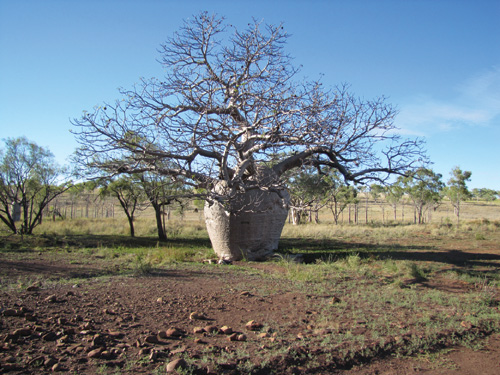 A boab tree in the Kimberley
A boab tree in the Kimberley
I am in Canada walking a snow-dusted road alongside a brook flowing with clear water and pooling in sparkling azure eddies. Ahead tower majestic snowy mountains. I am overawed. I feel as though I am in an immense church.
Science is my training, but I still like holy places; Buddhist temples, Hindu shrines, Greek orthodox churches, pagan temples. There I experience oneness. I am quiet; silent, I let the mind go.
In medicine, you learn quickly that there are no hard laws. People are mercurial, mysterious, and often refuse to remain in the confines dictated by research. So much so that, at times, the Bell Curve seems an artefact. Random Controlled Trials (RCTs) ‘freeze’ the environment so only one variable is tested. Isolation, though, is not real life. Real life is messy. Does science reflect it?
I decide to read the arguments for God. David Berlinski, a mathematician and a scientist, wrote The Devil’s Delusion for ‘the great many men and women [who] have a dull, hurt, angry sense of being oppressed by the science’.Berlinski attacks specific arguments put forward by the three New York Times bestseller atheists. He criticises them for interpreting religious texts in a literal way. How can it be proved that, in the absence of religion, wars would not have happened? It can be equally argued that religion may have had a moderating effect on the great secular demons of the twentieth century. Hitler saw the control of science as a prize of war. The unbridled science of genetics provided a tool for the eugenics movement, both in the United States as well as Hitler’s régime. There is insufficient evidence in history, Berlinski claims, to indicate that science can give us a moral framework with which to live respectful and peaceful lives. An exclusionary belief in science does not support morality at all.
What is true when there is no agreement on what construes evidence? Many things considered improbable yesterday are considered likely today. Is not the concept of God as improbable as the concept of the universe? Yet we knowthe universe exists. In fact, we think now that there are many universes – all simultaneous, some contracting, some expanding, some chasing their tails, and some, time-wise, ending before they began. And we think that God, whatever being, plasmic force, or unique understanding that is, is improbable?
Genes, Berlinski states, are like computers: full of information, but they need a program. Who is the programmer, and, hell, why therefore are we not more mechanical? Why do we laugh and cry? What is the evolutionary advantage of grief? Alfred Wallace, Darwin’s counterpart, had significant reservations on this count.
Berlinski finishes with a comparative tale and a metaphor. In the Renaissance, scientists had to hide their philosophy behind a religious cloak. Today there exists a crumbling but majestic cathedral of science, where questioning is forbidden. There is an underground swell of sciencedemonstrating the inadequacy of Darwin’s theory of evolution, yet, even when peer-reviewed, this science is rejected, omitted from publication, and the authors subject to severe tongue lashings by people of the order of Hitchens and Dawkins. The more science discovers, the bigger the unknown becomes. ‘Proven’ theories are proving irreconcilable. All very embarrassing.
Snow crinkles under my boots. I feel lost. I had hoped atheism would provide a strategy to save us, to give us breathing space to be sensible. I crouch by the water and watch its cold blue diamond lights swirling downstream, as though somewhere high in the mountains the river caught the stars and brought them down to earth. The tips of my fingers touch the water and I feel its pull, drawing me into it. I think of Les Murray’s words, ‘God is the poetry caught in any religion.’ Our poets and muses have much to tell us; after all, they are free to interpret what they feel, unencumbered by the filters of experts or statistics. Neil Young’s angry refrain stirs my thoughts: ‘When the aimless blades of science slashed the pearly gates, it was then that I knew I had had enough.’
Walking toward me is a small woman with a scarf over her head. She pauses with a smile on her face that I have seen before. I search my mind. Yes, I remember. The Dalai Lama at the Perth Entertainment Centre, when he stood on the stage in front of 8000 people and said, ‘I don’t know anything.’We all rose as one and applauded him.
I was heartened by the woman’s smile.
‘Please. I would like your opinion. There is a man – his name is Hitchens, he said that Voltaire’s statement that if God didn’t exist it would be necessary to invent him was ludicrous. Do you agree?’
She adjusted the bread and fruit in her basket.
‘God is a common character in the stories we need in order to understand the unknowable.’
‘Isn’t God the unknowable?’
She took a step away, but turned back to face me. Her eyes were the same colour as the stream.
‘Of course.’
I went back to the bookshelves. The Case for God was written by a woman who had spent many years as a Catholic nun, Karen Armstrong. The book begins with a description of descending into the darkness of the deep underground caverns of Lascaux in the Dordogne. The paintings there date back to Palaeolithic times, which began 30,000 years before Christ was born. There are images of animals, unusual pairings and stances, and drawings ‘governed by rules that we can never hope to understand’. It is likely that the belief then was that there was no separation of animals from humans, they were interchangeable. They venerated death for the life that it gave and the rituals were reminders of respect and the power of the unknown. This ideological system remained in place for some 20,000 years, but fell into disuse about 10,000 years ago.
In a detailed journey through religious history, it becomes clear that, until at least the Renaissance, the religious stories were never considered real. They were a tool to reiterate the struggle, to guide: ‘put into practice, a myth could tell us something profoundly true about our humanity.’ Thecontemplation of myth and story allows a person to stand outside ‘the prism of ego and experience the sacred’.
In Socrates’s time and for many centuries after, the debate about God was one that was conducted on both sides (the believers of Gods, the non-believers) in order to understand the unknowable. The debate was whether the various religious concepts could lead to understanding the ‘unknowable’. God was not omnipotent. Isaac Newton thought that science would eventually prove God’s existence. Einstein believed in the eternal unknowable.
A knowledge of the existence of something we cannot penetrate, of the manifestations of the profoundest reason and the most radiant beauty – it is this knowledge and this emotion that constitute the truly religious attitude, in this sense, and in this alone, I am a deeply religious man.
It is difficult to disagree with Armstrong when she says that there is a peace that can be gained with accepting the ineffable, the ‘not knowing’. Have not most people experienced a sense of peace in accepting things they can do nothing about? It is more, argues Armstrong; it is ‘transcendence’. There are many states, such as particular music, that can bring about transcendence. Her example is of Beethoven’s late string quartets,in which the listener ‘seems to experience sadness directly in a way that transcends ego, because this is not my sadness but sorrow itself’. Armstrong goes on to say, ‘The desire to cultivate a sense of the transcendent may be thedefining human characteristic.’
This startled me. The defining human characteristic? It is an explanation for some young people’s use of alcohol, Ecstasy, and, in earlier generations, LSD. Not just a rite of passage? Timothy Leary meets the Dalai Lama, but the chemical experience is short-lived. It gives a glimpse, a tantalising elusive snippet. We search. The world searches.
Poetry reveals transcendence through nature. Armstrong refers to Wordsworth and his advice to ‘nurture nature within’. If one has a ‘heart that watches and receives’, it becomes possible to ‘hear the silently imparted lessons’ of the streams, mountains, and woods.
The Case for God puts forward that the rise of science has had a major role in the rise of fundamentalism. Mythos is no longer understood to be allegory but must be rationalised. Many religions feel they need to apply ‘logos’, or science, to religion in order to save the belief. Hence the Creationist science abounding in the United States.
The religious, in order to argue with the science, have resorted to science, and both sides have created the current holy–unholy war of words.
I close the books and the journals. The water is muddy. I can no longer see upstream.
I return to the Kimberley and seek solace in its wild spaces. I hike among the gorges with their folded rocks and cockatoos, a wave of white against the orange of the rock and the blueness of the sky. It is the dry season. I drink in the crispness of the air. I am in Woroa country. I sit in the shade of a rock overhang and face the Wandjina men. They stare at me, mouthless and haloed. David Mowaljarlai, a Woroa elder, wrote in his book Yorro Yorro that the Wandjina painted themselves onto the rock when time began.
You see no mouth, because that is beyond our understanding, our wisdom, our knowledge. It is hidden behind mist or fog. That mist separates us from the higher levels that we can’t understand.
The Wandjina are integral to Yorro Yorro: that is, the ‘continual creation and renewal of nature in all its forms’. There is heartbreak in Mowaljarlai’s book. We can hold onto the strings in Beethoven’s quartets, but the transcendence that Aboriginal people had with nature is disappearing.
Once when I walked my country
I was lizard and kangaroo
I was turkey and emu
And the Wandjina walked with me.
‘Is this what you are telling us,’ I address the Wandjina, ‘that we need to walk with you again?’
The world is officially hotter. David Suzuki decries half-hearted attempts to find a solution. He calls for a return to ‘sacred balance’. There are signs. The level-headed economists and scientists are calling for fundamental changes in human values and the way we construct global economics. They speak of the need to develop societies of true compassion.
I turn off the air conditioner in my fibro box of a hotel room. Soon I am sweating. I look at my scribbled notes, crossed out and scribbled again. ‘The key to the existence of mankind was with us very early, thirty thousand years ago, and it survived until recently in the culture of Indigenous people and continues as a thin fragile thread in the voices of our poets and muses.’ Am I making an argument for animism? No, the term does not describe Aboriginal ideology, which seems so much more, but I do not know much of animism or primitive beliefs. Primitive? Is Aboriginal ideology primitive, or was it, is it, God? And what is ‘primitive’? We have progressed beyond that. What is progress? It is a muddy stream.
I get in my car and drive south on the Highway 1 towards Halls Creek. On the road there are immense trucks, each fronted with a thick curved blade several men high. They are the destruction tools of Barramundi Dreaming sites. The hills where the barramundi scales used to glint have been cut down, and the scales are now worn on women’s fingers and men’s tiepins in distant lands. If only they knew, surely.
I pass Purnululu, the country of striped sandstone domes. There is life even in the rocks, for the stripes are caused by cyanobacteria enjoying moisture between layers of oxidised rock. Aboriginal people considered rocks as part of the living, changing landscape. I had listened in Halls Creek, it seems so long ago, to the old people talk about narraku. Narraku is about relationships, with people, with rocks, with trees, lizards, land. They told me everything has a skin name, and that gives you your relationships. That tree might be your sister, or, they said with a giggle, covering their faces with their hands, ‘your mother-in-law!’ They gave me a skin name so that I could fit in with everything. I never remembered it.
I stop at a service station, driving slow in a curve past a group of women and children sitting among the litter on the edge of the concrete pad. The crows in the boab trees are like black feathers on the monks’ hands.
A man strides from the shop with a cigarette hanging from his lip. He pauses to look at the boab tree.
‘Shoot the bastards if I could.’
The crows spread their wings, as if to taunt him. He scowls and flicks the handle on the petrol pump. The bowser pumps in a rhythmic grunt. He is silent. So am I. The wind shivers through the silvery blue leaves of the tall gumtrees that encircle us.
‘It is a shame that the mining has destroyed sacred places.’
Red rag. A tremble passes through him.
‘They reckon the whole bloody country sacred, we can give it to them and then what?’ He gives a rough nod toward the women and their naked children, and slams the nozzle back onto the bowser with a brutal thump.
‘You know,’ he folds his arms and his dirt dusted face abruptly wrinkles in pity, ‘they are gone really, you know. I can’t help. You know this country is in my blood too.’
‘Gone?’
He put his hands in his pockets and shakes his head. ‘They just don’t fit anywhere, anymore.’
I idle the car for a moment. The group of women and children are standing, moving away from the road back into the bush. I ease the car forward onto the highway. An older Aboriginal woman waves at me, then turns away and joins the others. They melt into the bush like wraiths. I push the accelerator in a sudden desire to speed, but I cannot escape these haunting words of Oodgeroo Noonuccal.
We are the quiet daybreak paling the dark lagoon
We are the shadow-ghosts creeping back as the
camp fires burn low.
We are nature and the past, all the old ways
Gone now and scattered.
I am running in the desert. The day is bright but not hot. I have left my car and the asphalt of the highway. My feet are bare, my pace methodical and slow. I am thinking of Matilda. I am thinking of the answer. I know it was there somewhere in her fraught life. I can’t find it, so I think of other things.
I think of when the fourth transition will be. Will it be when much of the world as we know it has disappeared and the microbes disappear because the bones of nature have suddenly become barren? A frenzied feast before famine. Will it be ten years or a hundred? Then maybe there will be another, the fifth transition. That will be a millennium, surely, when some like animal slowly evolves into another humanoid, or a surviving colony of humans in awe of a slowly reviving nature begins to paint again: the animals, the moon, God in the sun’s rays, soft on the new growth.
The rain has come and gone. The beginning of the dry is full of long grasses and tender young saplings. The spinifex pigeons with their bright caps and masked eyes rise in fluttering clouds at the vibration of my step. This used to be where the Gouldian Finches flitted in a speckle of colour across the grasses. They aren’t here anymore. There is no one to look after the land, to burn it gently here and there, so that the old trees are saved and the grasses come up strong and stay the full dry. The finches have nowhere to nest, no food in the dominant grasses. The little birds with their feathers of many colours are almost, not quite yet, extinct.
I am running. Faster. I am on the road where the police found Matilda. The soil is powdery red, deep to my ankles, and rises in small puffs as if I am stamping blood from the earth. I am thinking of her and I am thinking of where we are going in this world. The tears roll down my cheek and for a brief moment the ground is spotted with moisture, but then my tears are covered in dust and dried by the sun.
Moira McKinnon shared the 2011 Calibre Prize for an Outstanding Essay with Dean Biron, whose essay ‘The Death of the Writer’ appeared in our May 2011 issue. Calibre was presented in association with Copyright Agency Limited’s Cultural Fund.
Principal works cited in this essay:
Karen Armstrong, The Case for God: What Religion Really Means, Vintage, 2009
David Berlinski, The Devil’s Delusion: Atheism and Its Scientific Pretensions, Basic Books, 2009
John Brockman, The Third Culture: Beyond the Scientific Revolution, Simon & Schuster, 1995
Bruce Chatwin, The Songlines,Viking, 1987
Richard Dawkins, The God Delusion: Religion, Terror and the Future of Reason, Bantam Press, 2006
Albert Einstein, Mein Weltbild (The World As I See It), Philosophical Library, 1931
Sam Harris, The End of Faith, W.W. Norton & Co., 2004
Christopher Hitchens, God Is Not Great: How Religion Poisons Everything, Allen & Unwin, 2007
James Lovelock, Gaia: A New Look at Life on Earth, Oxford University Press, 1979
David Mowaljarlai and Malnic Jutta, Yorro Yorro: Everything Standing Up Alive: Spirit of the Kimberley, Magabala Books, 1993
Oodgeroo Noonuccal (Kath Walker), We Are Going: Poems, Jacaranda Press, 1964
David Suzuki, The Sacred Balance: Rediscovering Our Place in Nature, Greystone Books, 1997
Alexis Wright, ‘A Weapon of Poetry’, Overland 193, 2008
CONTENTS: JULY–AUGUST 2011


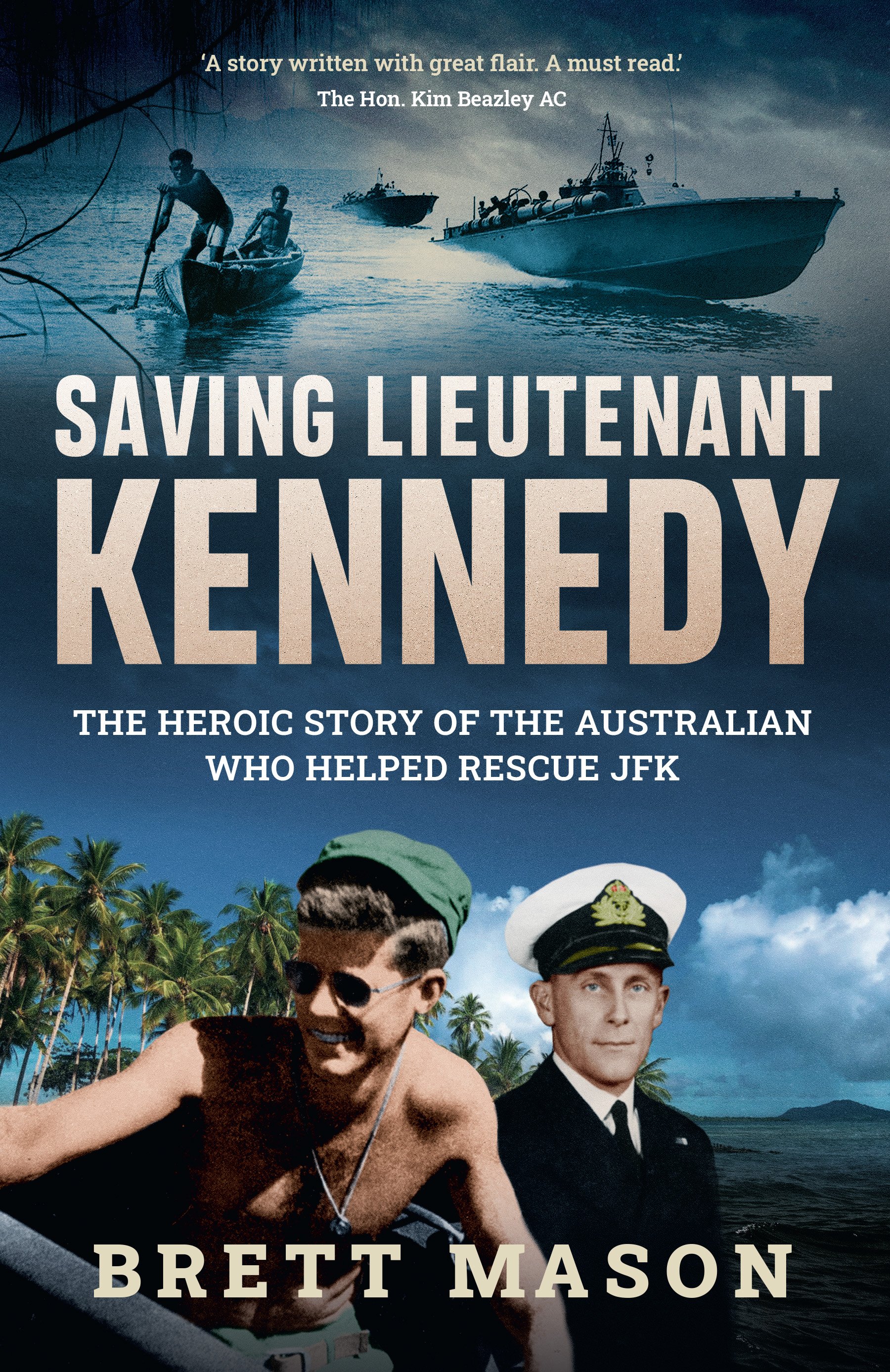
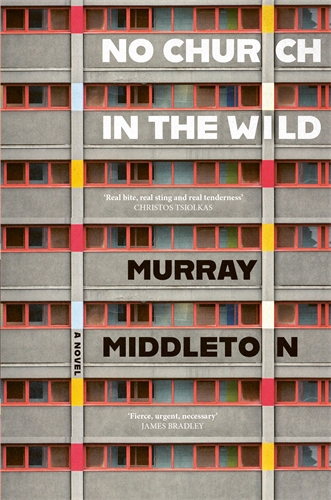
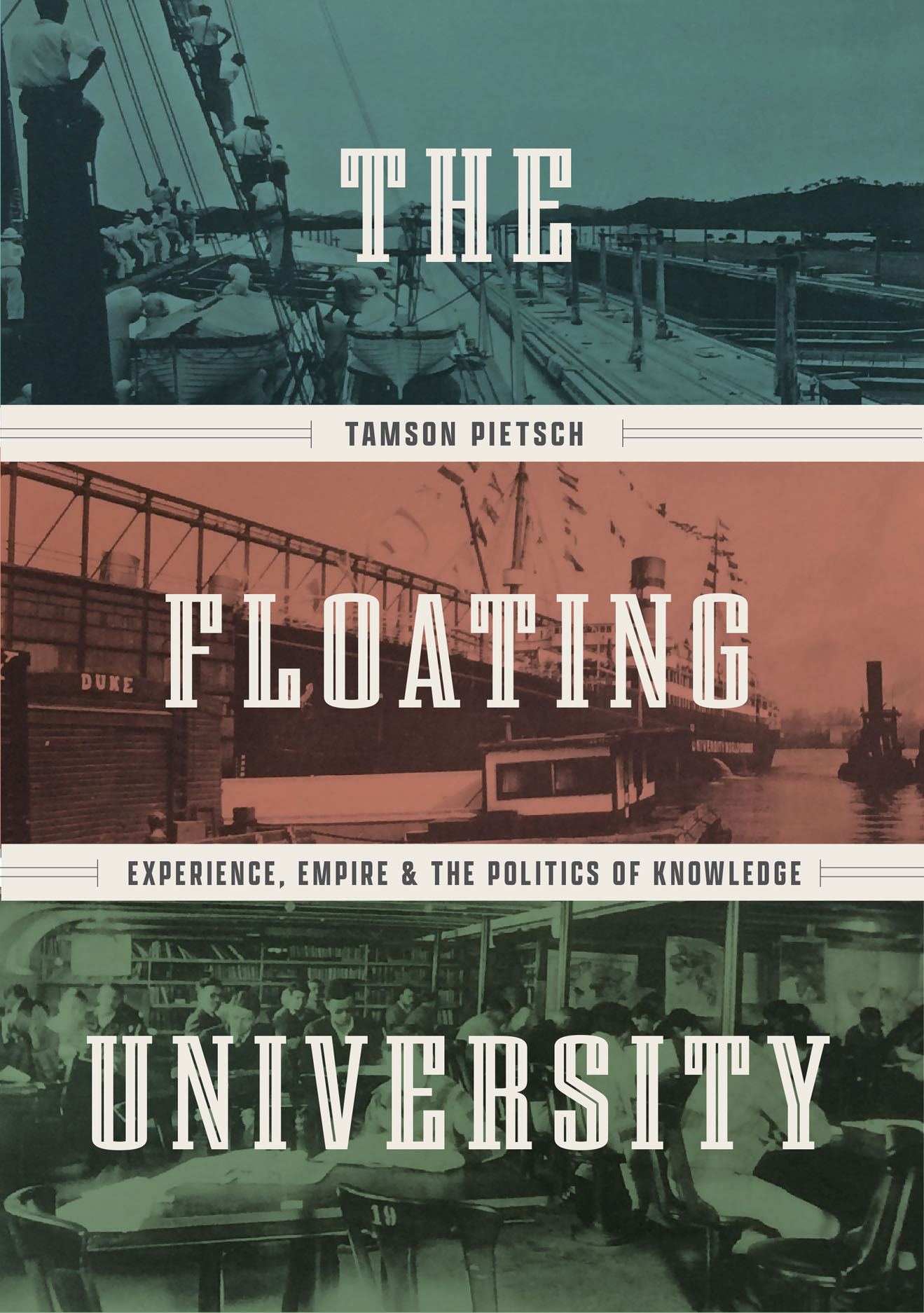
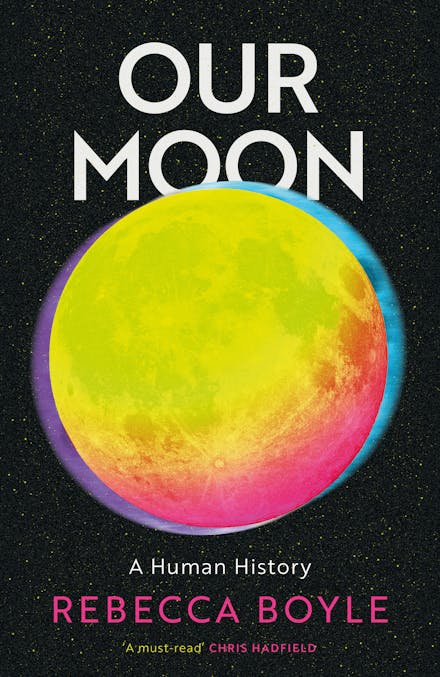
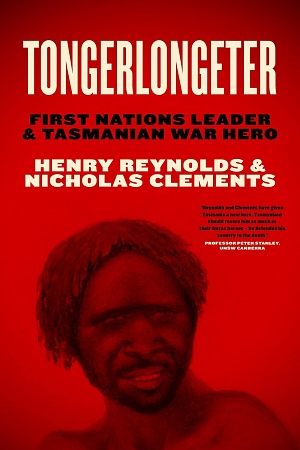
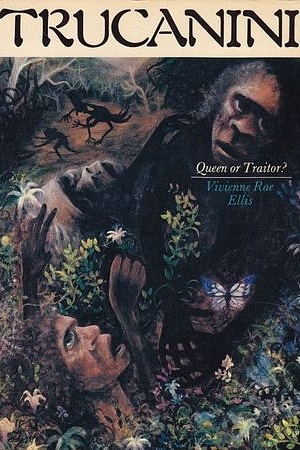

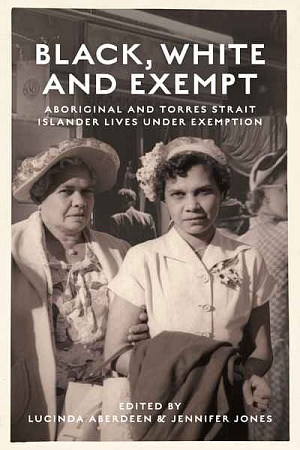
Leave a comment
If you are an ABR subscriber, you will need to sign in to post a comment.
If you have forgotten your sign in details, or if you receive an error message when trying to submit your comment, please email your comment (and the name of the article to which it relates) to ABR Comments. We will review your comment and, subject to approval, we will post it under your name.
Please note that all comments must be approved by ABR and comply with our Terms & Conditions.